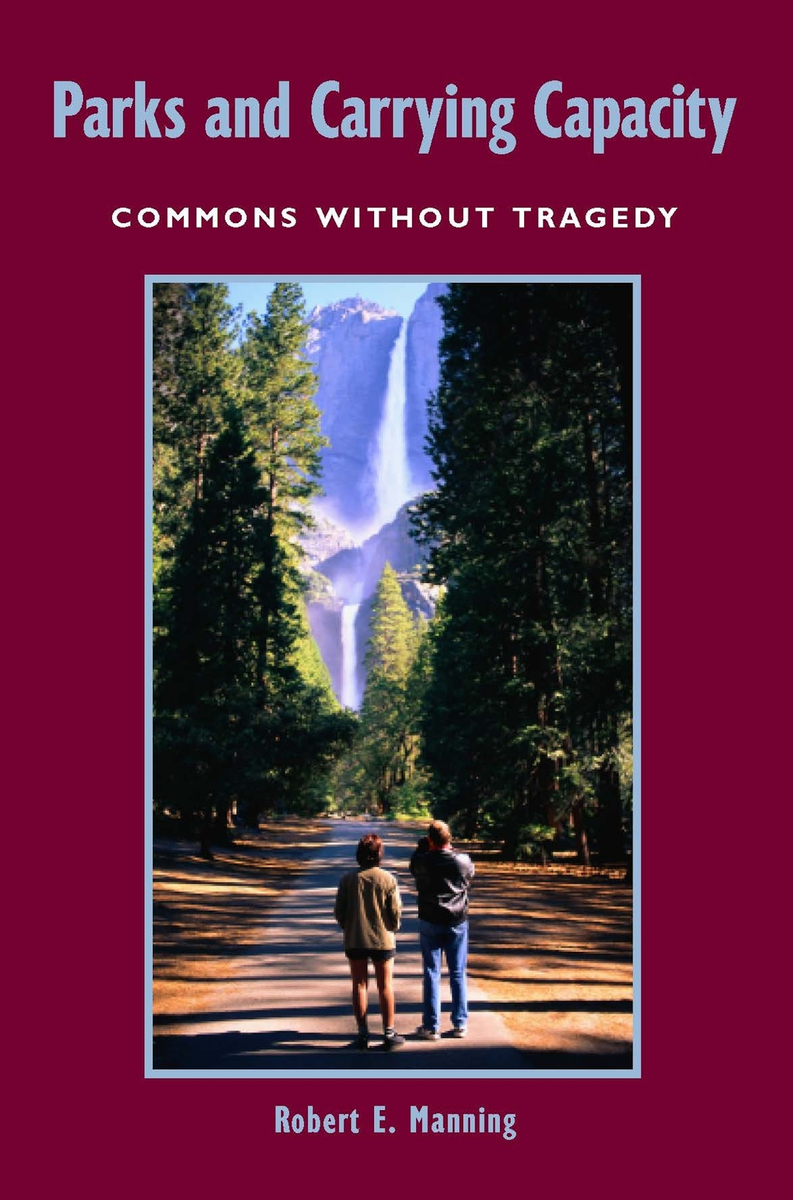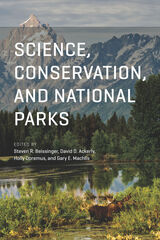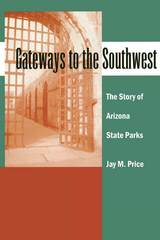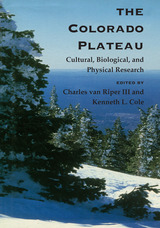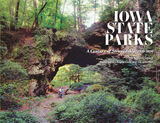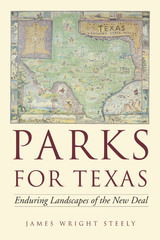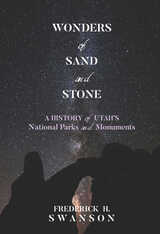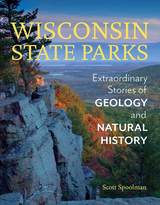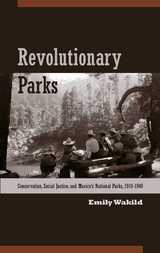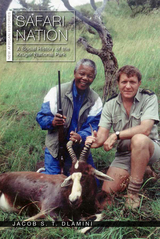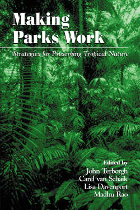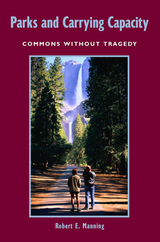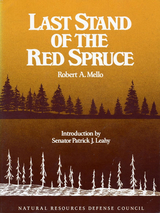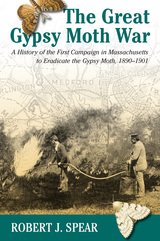Parks and Carrying Capacity: Commons Without Tragedy
by Robert E. Manning
Island Press, 2007
Cloth: 978-1-55963-104-4 | Paper: 978-1-55963-105-1 | eISBN: 978-1-59726-615-4 (all)
Library of Congress Classification SB486.P83M36 2007
Dewey Decimal Classification 333.783140973
Cloth: 978-1-55963-104-4 | Paper: 978-1-55963-105-1 | eISBN: 978-1-59726-615-4 (all)
Library of Congress Classification SB486.P83M36 2007
Dewey Decimal Classification 333.783140973
ABOUT THIS BOOK | AUTHOR BIOGRAPHY | REVIEWS | TOC | REQUEST ACCESSIBLE FILE
ABOUT THIS BOOK
Parks and Carrying Capacity is an important new work for faculty, graduate and undergraduate students, and researchers in outdoor recreation, park planning and management, and natural resource conservation and management, as well as for professional planners and managers involved with park and outdoor recreation related agencies and nongovernmental organizations.
AUTHOR BIOGRAPHY
Robert E. Manning is a professor in the Rubenstein School of Environment and Natural Resources at the University of Vermont, where he teaches park and wilderness management and environmental history and philosophy, and conducts a program of research for the U.S. National Park Service.
REVIEWS
"Parks and Carrying Capacity demonstrates how applied social science can inform national park and protected area managment. Forging a strong link between academy and practice is increasingly important given the need for rigorous methodologies to analyze problems, identify management responses, and evaluate their effectiveness. Manning emphasizes a framework that will advance adaptive management and engage the public in creating sustainable strategies for our shared resources."
— Nor J. Mitchell, Director, Conservation Study Institute, National Park Service"Over the years, the concept of carrying capacity, so critical to management of parks and protected areas, has been enriched by a host of theoretical and empirical advances. For more than two decades, Manning's work has been at the heart of this progress and has given us the means to understand how values and expectations affect human use of parks and protected areas. Parks and Carrying Capacity is poised to become the standard work on the subject."
— David Harmon, Executive director, the George Wright Society"Examining different approaches that can be used to help analyze and manage carrying capacity and maintain long-term sustainability and creating a unique and comprehensive framework that defines carrying capacity challenges and provides case studies as models for application in parks, protected areas, and beyond."
— Natural Resources Journal"This book is a valuable contribution to a literature calling for increased science-based knowledge about the long-term management and sustainability of critical biophysical and social values for parks and other protected areas. Manning offers a range of practical, easy-to-understand case studies from applied research and resource management that addresses the question, At what point must managers intervene to prevent unacceptable environmental and social impacts by visitors? Policy makers, field resource managers, planners, researchers, teachers, and students interested in the controversy over park protection and preservation versus use will benefit greatly from this provocative volume."
— David W. Lime, senior research associate emeritus, Department of Forest Resources, Univ. of MN"This book is a valuable contribution to a literature calling for increased science-based knowledge about the long-term management and sustainability of critical biophysical and social values for parks and other protected areas. Manning offers a range of practical, easy-to-understand case studies from applied research and resource management that addresses the question, At what point must managers intervene to prevent unacceptable environmental and social impacts by visitors? Policy makers, field resource managers, planners, researchers, teachers, and students interested in the controversy over park protection and preservation versus use will benefit greatly from this provocative volume."
— David W. Lime, senior research associate emeritus, Department of Forest Resources, Univ. of MN"Examining different approaches that can be used to help analyze and manage carrying capacity and maintain long-term sustainability and creating a unique and comprehensive framework that defines carrying capacity challenges and provides case studies as models for application in parks, protected areas, and beyond."
— Natural Resources Journal"Over the years, the concept of carrying capacity, so critical to management of parks and protected areas, has been enriched by a host of theoretical and empirical advances. For more than two decades, Manning's work has been at the heart of this progress and has given us the means to understand how values and expectations affect human use of parks and protected areas. Parks and Carrying Capacity is poised to become the standard work on the subject."
— David Harmon, Executive director, the George Wright Society"Parks and Carrying Capacity demonstrates how applied social science can inform national park and protected area managment. Forging a strong link between academy and practice is increasingly important given the need for rigorous methodologies to analyze problems, identify management responses, and evaluate their effectiveness. Manning emphasizes a framework that will advance adaptive management and engage the public in creating sustainable strategies for our shared resources."
— Nor J. Mitchell, Director, Conservation Study Institute, National Park Service"This book is a valuable contribution to a literature calling for increased science-based knowledge about the long-term management and sustainability of critical biophysical and social values for parks and other protected areas. Manning offers a range of practical, easy-to-understand case studies from applied research and resource management that addresses the question, At what point must managers intervene to prevent unacceptable environmental and social impacts by visitors? Policy makers, field resource managers, planners, researchers, teachers, and students interested in the controversy over park protection and preservation versus use will benefit greatly from this provocative volume."
— David W. Lime, senior research associate emeritus, Department of Forest Resources, Univ. of MN"Examining different approaches that can be used to help analyze and manage carrying capacity and maintain long-term sustainability and creating a unique and comprehensive framework that defines carrying capacity challenges and provides case studies as models for application in parks, protected areas, and beyond."
— Natural Resources Journal"Over the years, the concept of carrying capacity, so critical to management of parks and protected areas, has been enriched by a host of theoretical and empirical advances. For more than two decades, Manning's work has been at the heart of this progress and has given us the means to understand how values and expectations affect human use of parks and protected areas. Parks and Carrying Capacity is poised to become the standard work on the subject."
— David Harmon, Executive director, the George Wright Society"Parks and Carrying Capacity demonstrates how applied social science can inform national park and protected area managment. Forging a strong link between academy and practice is increasingly important given the need for rigorous methodologies to analyze problems, identify management responses, and evaluate their effectiveness. Manning emphasizes a framework that will advance adaptive management and engage the public in creating sustainable strategies for our shared resources."
— Nor J. Mitchell, Director, Conservation Study Institute, National Park Service"This book is a valuable contribution to a literature calling for increased science-based knowledge about the long-term management and sustainability of critical biophysical and social values for parks and other protected areas. Manning offers a range of practical, easy-to-understand case studies from applied research and resource management that addresses the question, At what point must managers intervene to prevent unacceptable environmental and social impacts by visitors? Policy makers, field resource managers, planners, researchers, teachers, and students interested in the controversy over park protection and preservation versus use will benefit greatly from this provocative volume."
— David W. Lime, senior research associate emeritus, Department of Forest Resources, Univ. of MNTABLE OF CONTENTS
Preface
Introduction
PART I. From Commons to Carrying Capacity
Chapter 1. The Tragedy of the Commons
Chapter 2. Carrying Capacity of Parks and Protected Areas
Chapter 3. Indicators and Standards
PART II. Research to Support Application of Carrying Capacity
Chapter 4. Identifying Indicators for Parks and Protected Areas
Chapter 5. Normative Standards for Indicator Variables
Chapter 6. Visual Research Methods
Chapter 7. Tradeoffs in Park and Outdoor Recreation Management
Chapter 8. Computer Simulation Modeling of Visitor Use
PART III. Case Studies of Measuring and Managing Carrying Capacity
Chapter 9. Managing Recreation at Acadia National Park
Chapter 10. Day-Use Social Carrying Capacity of Yosemite Valley
Chapter 11. Wilderness Camping at Isle Royale National Park
Chapter 12. Indicators and Standards at Boston Harbor Islands National Recreation Area
Chapter 13. Estimating Carrying Capacity of Alcatraz Island
Chapter 14. Defining and Managing the Quality of the Visitor Experience at Muir Woods National Monument
Chapter 15. Wilderness Management at Zion National Park
Chapter 16. Indicators and Standards for Cultural Resources at Mesa Verde National Park
PART IV. Managing Carrying Capacity
Chapter 17. Alternative Management Practices
Chapter 18. Evaluating the Effectiveness of Management Practices
PART V. Beyond Parks and Protected Areas
Chapter 19. Indicators and Standards of Sustainability
Conclusion
Appendix A. Indicators for Parks and Protected Areas
Appendix B. Standards for Parks and Protected Areas
References
Index
Introduction
PART I. From Commons to Carrying Capacity
Chapter 1. The Tragedy of the Commons
Chapter 2. Carrying Capacity of Parks and Protected Areas
Chapter 3. Indicators and Standards
PART II. Research to Support Application of Carrying Capacity
Chapter 4. Identifying Indicators for Parks and Protected Areas
Chapter 5. Normative Standards for Indicator Variables
Chapter 6. Visual Research Methods
Chapter 7. Tradeoffs in Park and Outdoor Recreation Management
Chapter 8. Computer Simulation Modeling of Visitor Use
PART III. Case Studies of Measuring and Managing Carrying Capacity
Chapter 9. Managing Recreation at Acadia National Park
Chapter 10. Day-Use Social Carrying Capacity of Yosemite Valley
Chapter 11. Wilderness Camping at Isle Royale National Park
Chapter 12. Indicators and Standards at Boston Harbor Islands National Recreation Area
Chapter 13. Estimating Carrying Capacity of Alcatraz Island
Chapter 14. Defining and Managing the Quality of the Visitor Experience at Muir Woods National Monument
Chapter 15. Wilderness Management at Zion National Park
Chapter 16. Indicators and Standards for Cultural Resources at Mesa Verde National Park
PART IV. Managing Carrying Capacity
Chapter 17. Alternative Management Practices
Chapter 18. Evaluating the Effectiveness of Management Practices
PART V. Beyond Parks and Protected Areas
Chapter 19. Indicators and Standards of Sustainability
Conclusion
Appendix A. Indicators for Parks and Protected Areas
Appendix B. Standards for Parks and Protected Areas
References
Index
REQUEST ACCESSIBLE FILE
If you are a student who cannot use this book in printed form, BiblioVault may be able to supply you with an electronic file for alternative access.
Please have the accessibility coordinator at your school fill out this form.
It can take 2-3 weeks for requests to be filled.
See other books on: Manning, Robert E. | National parks and reserves | Parks | Protected areas | Public use
See other titles from Island Press
Nearby on shelf for Plant culture / Parks and public reservations:
9780226423005
9781558494794
